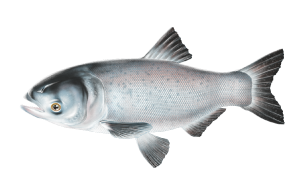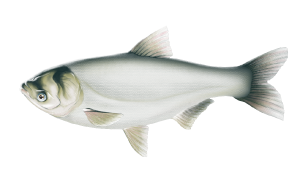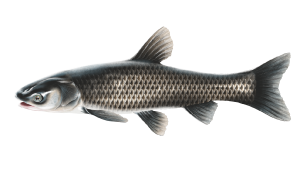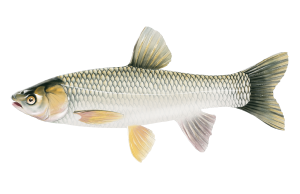Asian Carp Canada
Asian Carp Canada was created to bring together information on the most recent prevention technologies, early warning measures, response efforts, and the overall threat of Asian carps to the Great Lakes and beyond. The project components aim to enhance education and knowledge of Asian carps. This work is done collaboratively by Fisheries and Oceans Canada, the Invasive Species Centre, the Ontario Federation of Anglers and Hunters, the Toronto and Region Conservation Authority, the Ministry of Natural Resources and Forestry, the Toronto Zoo, the Royal Ontario Museum and the Federation of Ontario Cottagers’ Associations. Ultimately, this work will contribute to the early detection efforts of Asian carps in Canadian waters.

About Asian Carps
Asian carps were introduced to the Southern U.S. in the late 1960’s and 1970’s for use as biological control in aquaculture facilities based on their specific diets. Flooding events allowed at least three of the four species (Bighead, Silver, and Black carps) to escape these facilities and eventually make their way into the Mississippi River Basin. The spread of Grass Carp has largely been the result of stocking for the purposes of aquatic vegetation control.
Frequently Asked Questions
Asian Carp Canada has put together a list of frequently asked questions to help the educate the public on Asian carps.
If you can’t find what you’re looking for, email us at info@invasivespeciescentre.ca.
Quotes
“At Fisheries and Oceans Canada, we recognize the critical importance of early intervention to prevent the establishment of invasive species. Along with our partners within Canada and in the United States we share the responsibility of protecting the biodiversity and habitat of the Great Lakes ecosystems.“
Fisheries and Oceans Canada’s Asian Carp Program
“Asian carps, threaten our lakes, streams and rivers by altering habitat and endangering native species. The Invasive Species Centre and the Asian Carp Canada program has a strong focus on preventing Asian carps from landing in our waters, but we can’t do it alone. We need the public to be aware of the threats, learn to identify these fish and know how to report them so we can prevent them from taking hold in our waters.”
Colin Cassin, Invasive Species Centre – Executive Director
“If invasive carps are allowed to establish in the Great Lakes, this will irreversibly change the way we fish and manage our fisheries in Ontario. Inaction jeopardizes our biodiversity, Indigenous and non-Indigenous cultural identities and enormous sustainable economies dependent on healthy fisheries.”
Matt DeMille, OFAH – Executive Director
Media Contacts
Hilary Prince
Communications Advisor
Ontario and Prairie Region
Fisheries and Oceans Canada | Government of Canada
Phone: 905-336-4974
Deborah Sparks
Business Development and Communications Manager
Invasive Species Centre
dsparks@invasivespeciescentre.ca
Phone: 705-541-5790 or 705-255-8301



